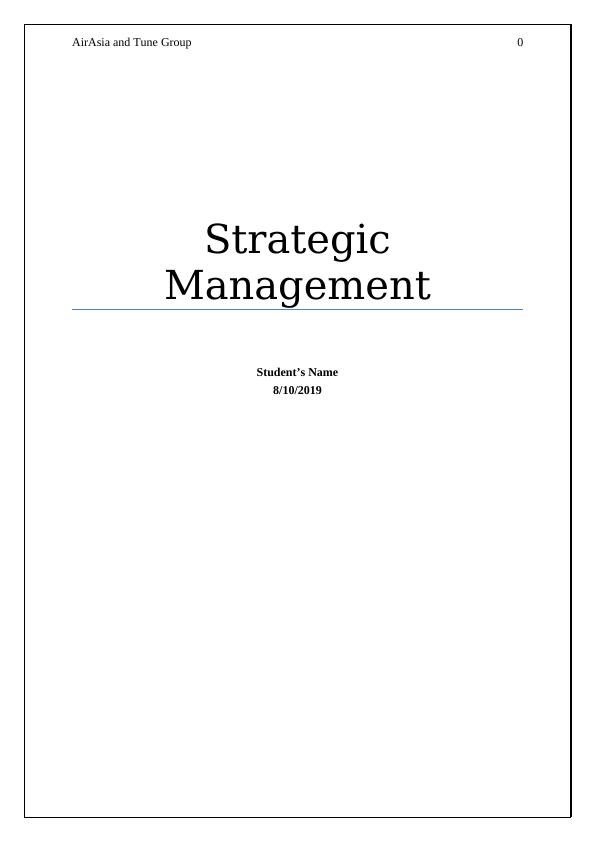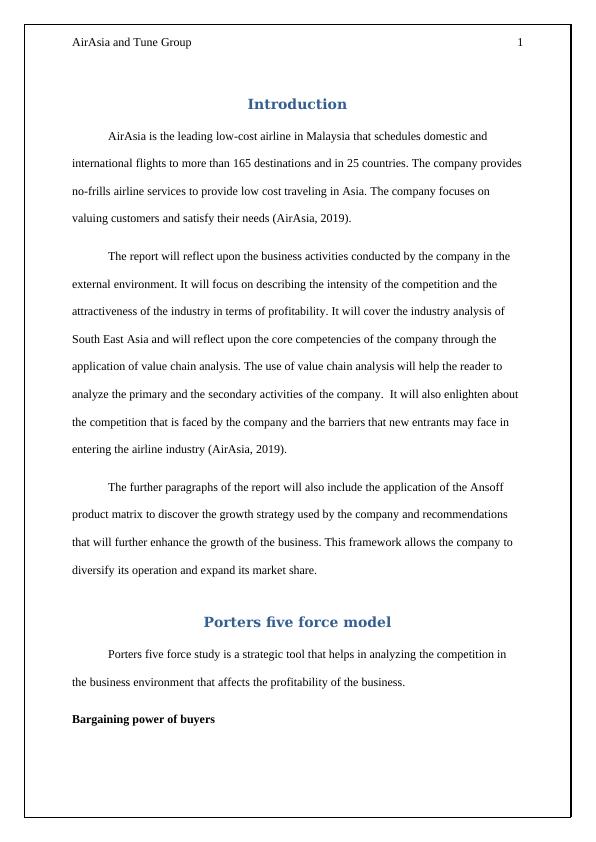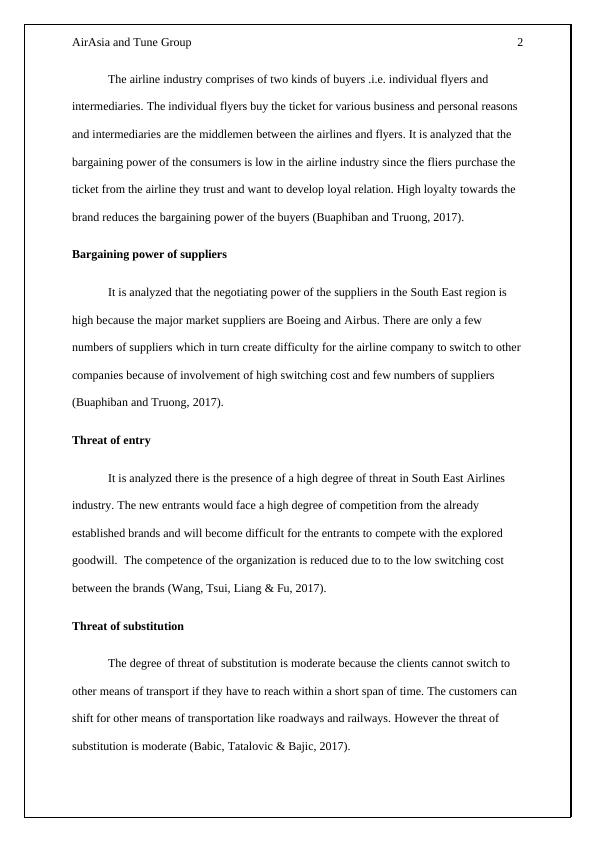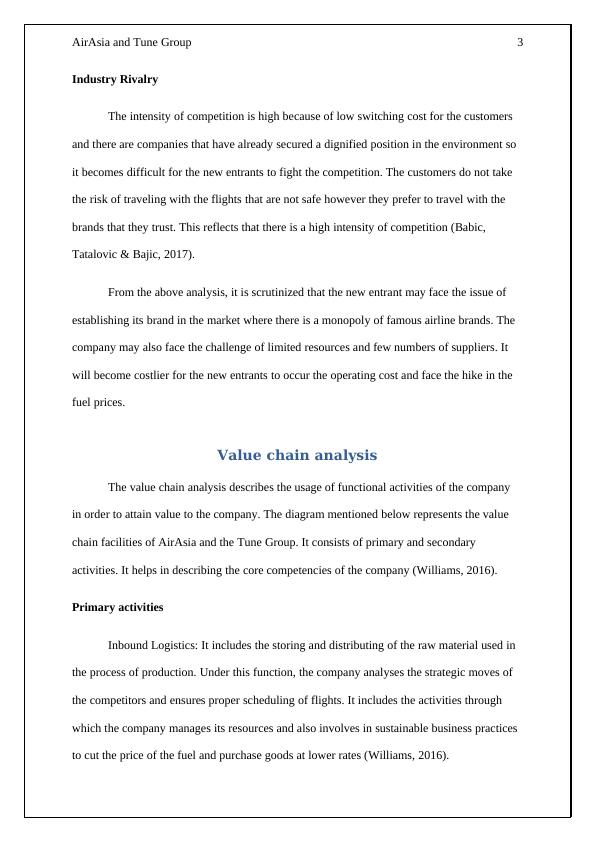AirAsia and Tune Group: Strategic Management Analysis
Analyzing the attractiveness of the South East Asian airline industry using Porter's five forces model, discussing barriers to entry for new entrants, conducting a value chain analysis of AirAsia and the Tune Group's organizational capabilities, interpreting their core competencies using additional frameworks, discussing how they used their existing capabilities to grow and diversify their business, and analyzing growth directions and making recommendations using Ansoff's Product/Market Matrix.
Added on 2022-10-10
About This Document
AirAsia and Tune Group: Strategic Management Analysis
Analyzing the attractiveness of the South East Asian airline industry using Porter's five forces model, discussing barriers to entry for new entrants, conducting a value chain analysis of AirAsia and the Tune Group's organizational capabilities, interpreting their core competencies using additional frameworks, discussing how they used their existing capabilities to grow and diversify their business, and analyzing growth directions and making recommendations using Ansoff's Product/Market Matrix.
Added on 2022-10-10
End of preview
Want to access all the pages? Upload your documents or become a member.




